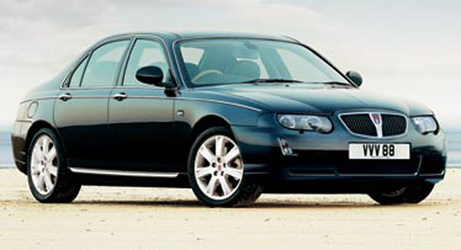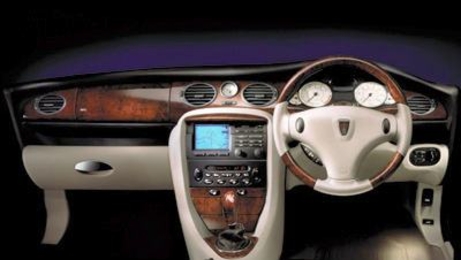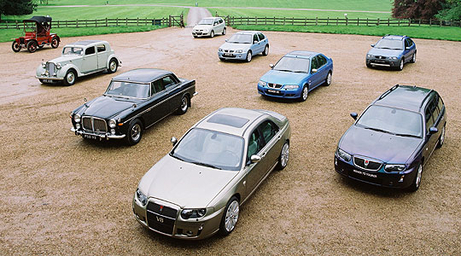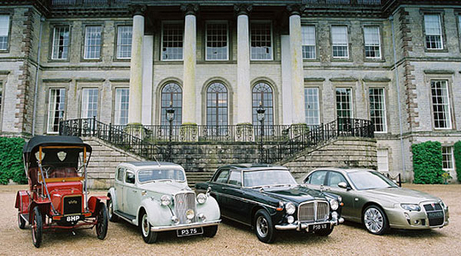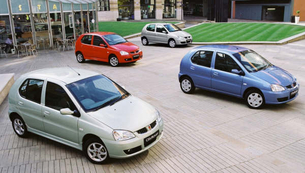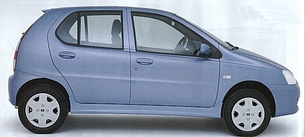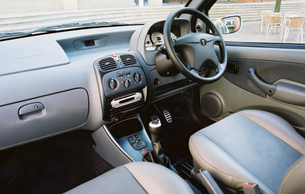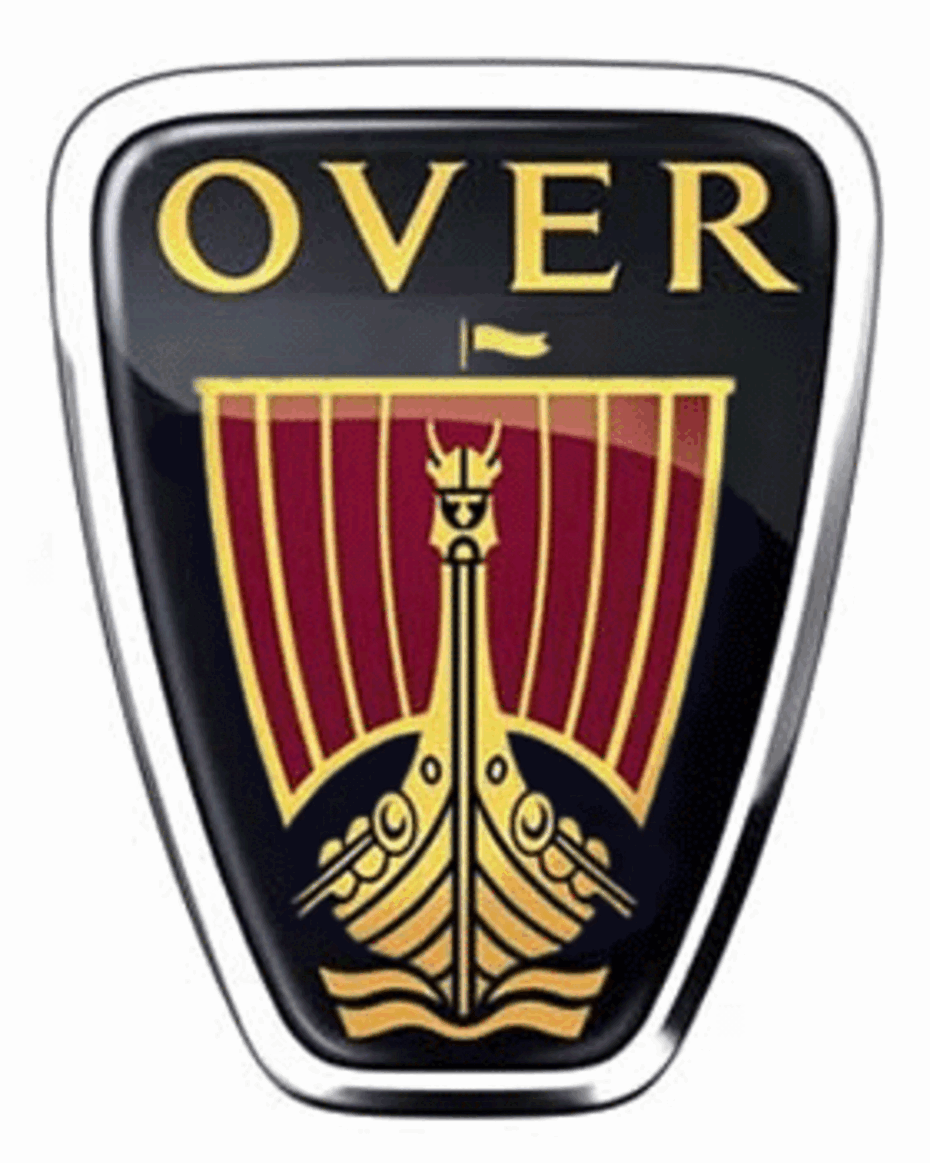1994 bis 2005
The Era of BMW - short but painful.
1994 a not really comprehensible coup’ d’etat let the Rover Group fall into the hands of BMW, after British Aerospace was just only interested at Austin Rover for 5½ years, and gained for some profit by selling the Rover Group. First they offered it to Honda, but they only wanted to keep 47,5 % of the shares, and so renounced the chance for a complete takeover.
Bernd Pieschetsrieder, who’s uncle Sir Alec Issigonis already formed the Austin Company (Mini) took over Austin Rover and he overtook himself with that big chunk.
The Rover Seventy Five
Traditionally the 75 was consciously named like the model from the 50ties, the P4 ran successfully on the roads of the Empire over many years.
Equipped with modern front wheel drive, V6, and also Diesel engines (made by Magna in Austria), with every comfort and goodies one awaits nowadays, the 75 stands still for exclusivity. The new 75 pointed directly to those circles of customers, who preferred cars with British style.
Phoenix, saviour in the ashes
In January 2000 the fate should twist again, BMW got off under remarkable circumstances, a rescue company retarded before the take over and a consortium named Phoenix should write the last chapter of the Rover Marque.
The most promising product - the Mini was pealed out of the Ex Rover Group portfolio by BMW and successfully marketed, until today. Ford took over the Off Road group round about the Range Rover. What was left, was nothing else than a filleted little company which was no competitor anymore for BMW and Ford.
A genius manoeuvre from BMW even though, not cheap for BMW.
Soon the new owners completed their model series each with sporty MG equivalents.
Here an overview of the MG models until 2005, the bitter end.:
Overview:
On top the Super Sportscar MG Xpower SV, the two seater roadster with the traditional name TF
The sporty saloons MG ZR, ZS and the Tourer ZT-T.
A special model was the MG ZT 260 which was powered by a 260 hp Ford V8 (Mustang) of which a highly tuned Tourer was made too, the fastest estate with over 700 hp and a top speed of 360 Kmh!
For this behalf the MG had to be transferred to rear wheel drive.
The Rover 75 model range until 2005, the bitter end:
A new small car to replace the missing Rover Mini,
the City Rover, from the cooperation with the Indian Tata company
the Rover 25 and the Streetwise
the Rover 45 which already had come into the years
and the top model 75.
The type diversity of the early century shows, that the management is looking for new market niches, for instance there is an MG ZR as a station car available.
Nothing shows it more drastic than the circumstance, how the once proud Rover Marque used the magic potion “Badge Engineering”. Where one formerly used at least origin British cars during the 60ties an 70ties, as a basis for some Label-deceptions, so was it a complete strange marque from Tata Indica badged as a Rover nowadays.
Unbelievable, but one City Rover was shown at the Vienna Motor Show 2005!
Today, some CityRovers can get purchased at Ebay, the only historical value of this car is, that nobody will know it in 30 years. But masochists will buy it now and keep it for the museum.
During the 100th year of Rover Cars, Rover was negotiating with the Chinese SAIC company, to overtake Rover and whilst SAIC was interested having one foot in the door to Europe and Rover again, hoped to have a potential rescuer for hard times, cause the Rover Group was making losses every day.
But the negotiations failed in April 2005, because Rover lost 25mill Euros every month and became insolvent, thousands of working stations got lost.
On the 25th of April it is final, MG Rover becomes bankrupt, the British Government hesitates to help with 500 mill pounds and so the last independent British Car producer closes down.

